Brookwood Monuments
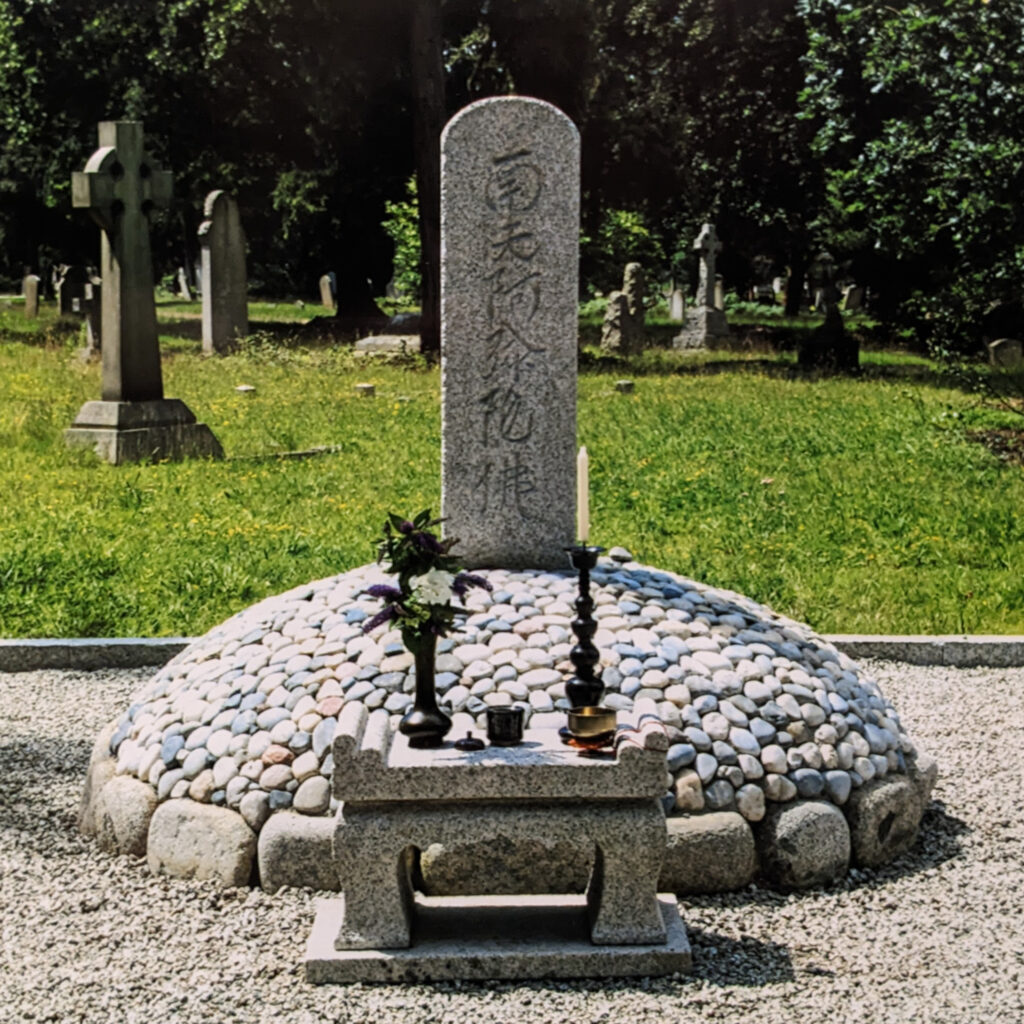
In 2005 an English Zen monk, Venerable Zenko Croysdale, came to visit Rev. Sato at Three Wheels and spoke to him of his intention to leave Three Wheels a bequest in his will. Venerable Takehara, suggested that, based on this bequest, Three Wheels might try and construct a grave site, free of any discrimination, that is open to Buddhists of any tradition and for any friends of Three Wheels who might feel sufficiently comfortable with the Buddhist way of living.
Subsequently in the summer of 2007 the Three Wheels’ Stūpa of Namu-Amida-Butsu was installed at Brookwood with the help of Mr Masayuki Ogawa, a Japanese garden designer from Kyoto, and six other Dharma friends from Japan. The central granite monument, carved in Kyoto by Mr Kinzo Nishimura – the best stonemason in Japan, bears the nembutsu “Namu-Amida-Butsu” in calligraphy inscribed by Venerable Chimyo Takehara and modelled on Shinran Shonin’s own writing.
Four Japanese Students' Graves
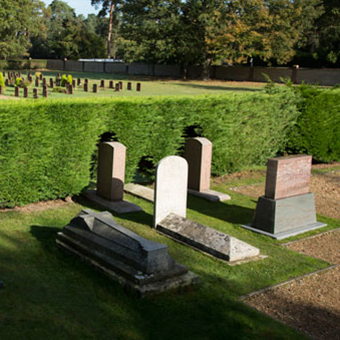
Soon after coming to Britain in 1993 to foster mutual understanding and spiritual exchange, Rev. Kemmyo Taira Sato learnt of Brookwood Cemetery and of the graves of four Japanese students who were buried there between 1866 and 1873. He was profoundly moved by the courtesy and compassion with which these four young men had been treated by their British friends, and ever since then, members of the Shogyoji-Three Wheels sangha have regularly visited the graves to express their gratitude to those who gave their lives for the modernization of Japan.
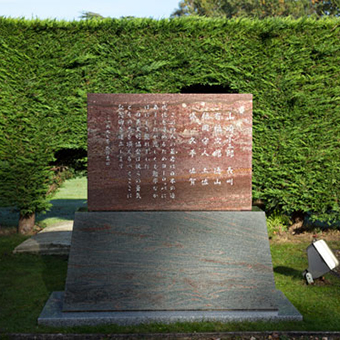
In 1997 a Monument in their honour was erected alongside their graves by the Anglo-Japanese Friendship Society of Kagoshima and unveiled on 28th August 1998 by Mrs. Kyoko Tanaka and Professor Setsuko Koga.
Williamson Monument
In 1863 five members of the Choshu han, closely followed in 1865 by nineteen Satsuma, were the first Japanese students ever to arrive in Britain, having escaped from Japan at the risk of their lives. They were immediately enrolled in University College London, in his own Department, through the good offices of Professor Alexander Williamson FRS.
This was the prelude to one of the major turning points in Japanese history, the overthrow of the Shogunate and the Meiji Restoration of 1868, and a landmark in Anglo-Japanese relations. Indeed, the majority of the students, whom Professor Williamson and his wife Catherine had so warmly welcomed and befriended, went on to become leading figures both in the new government and in the modernization of Japan.
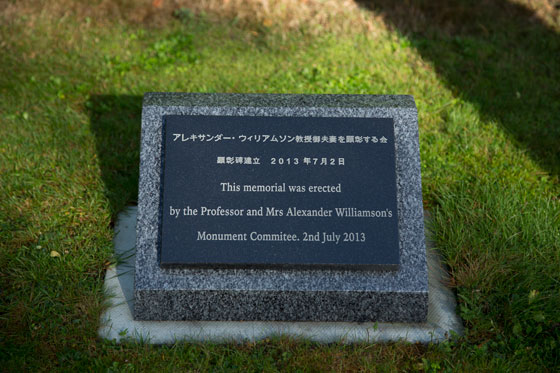
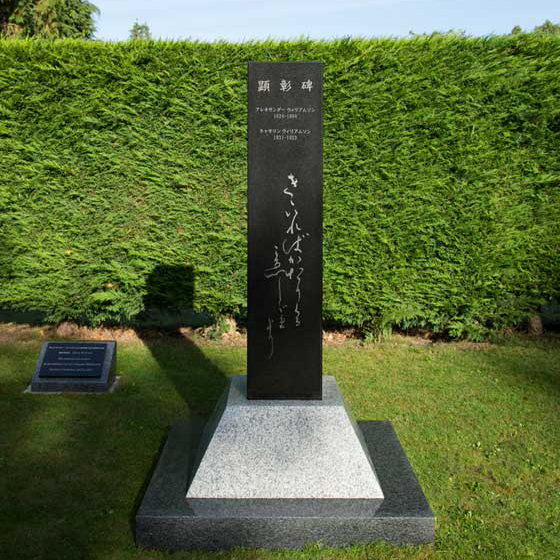
The year 2013 marked the 150th Anniversary of the students’ arrival, and on July 2nd a Monument in honour of the Williamsons and the extraordinary part they played in the unfolding of these great events was unveiled by the Japanese Ambassador. It stands next to the graves of four young Japanese and to the Monument erected in their honour. Sadly, they died of tuberculosis before they could accomplish their mission, one of them being nursed by Mrs. Williamson in her own home until his death.
Prof. and Mrs Williamson’s Grave
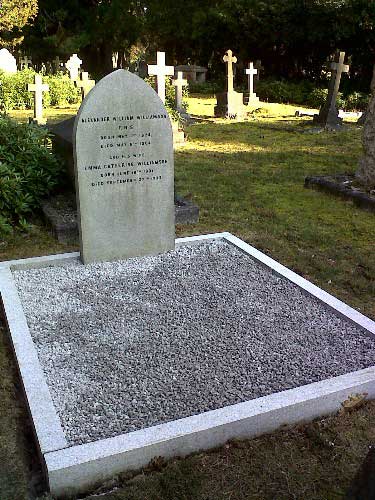
In 2007, whilst paying one of his regular visits to the Japanese students’ graves, Rev. Sato was delighted to chance upon the nearby resting place of the late Prof. Alexander William Williamson, and his wife Catherine, who generously hosted the students during their time in England; even going so far as to care for Kosaburo Yamazaki in their own home when he became terminally ill.
It was in fact due to Professor Williamson’s help that Yamazaki’s Japanese friends were able to construct a grave for him at Brookwood in 1866; the oldest Japanese grave to be found in the West.
In 2012, through mutual co-operation between Three Wheels and representatives of the Satsuma, Choshu, Tosa and Hizen clans, together with the descendants of those early student pioneers, a monument of gratitude and respect for Prof. and Mrs Williamson was erected in Brookwood Cemetery.
Fragrant Light
Far more important than simply searching for an answer to one’s question is to consider the context from which that question has sprung. (A Dharma friend)